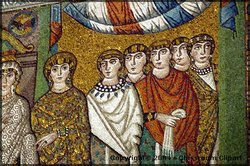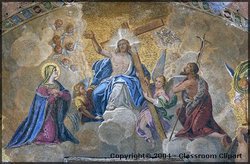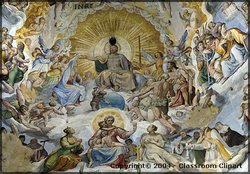Art
|
|
| Contents |
Introduction
Art, a diverse range of human activities involving the creation of visual, auditory, or performed artifacts, expresses the author's imaginative, conceptual, or technical skill. Intended to be appreciated for their beauty or emotional power, these creations encompass a vast range of forms, styles, and cultures. Art includes a variety of media, such as painting, sculpture, music, literature, film, dance, and more.
The word art is often used to refer to the visual arts, and arts is used to refer to visual art, literature, music, dance — the fine arts. However, such distinctions are the subject of many discussions and debates. Art, in its broadest meaning, is the expression of creativity or imagination, or both.
Historical Development and Styles
Art history is as old as human civilization itself, evolving through various eras and styles. Prehistoric art includes cave paintings like those found in Lascaux, France. Ancient civilizations like Egypt, Greece, and Rome developed their distinctive art forms, significantly influencing Western art. The Middle Ages saw the rise of religious art, followed by the Renaissance, which marked a return to classical ideals and proportions. The modern era introduced movements such as Impressionism, Cubism, Surrealism, and Abstract Expressionism, each representing a distinct approach to the concept of art. Art seems to be almost universal throughout the human race — integral to the human condition. There are no cultures that do not participate in it to some extent, and child art is created by all from about the first birthday.
Mediums and Techniques
Art is created through various mediums and techniques. Painting, one of the oldest forms, uses pigments on surfaces like canvas or walls. Sculpture involves shaping materials like stone, metal, or wood. Photography, a relatively new medium, captures images using light-sensitive materials. Digital art employs technology as its primary medium. Each medium has its unique properties and techniques, shaping the artist's expression.
Art Forms
Cultural and Social Functions
Art serves multiple cultural and social functions. It can be a medium for social commentary, expressing cultural identity, or challenging societal norms. Art also serves religious and ceremonial purposes, as seen in the artifacts of many cultures. It can be a form of communication, conveying ideas and emotions that might be difficult to express otherwise.
Art in Education and Therapy
Art education is a vital aspect of cultural education, enhancing creativity, critical thinking, and aesthetic appreciation. Art therapy uses the creative process of making art to improve a person's physical, mental, and emotional well-being, helping individuals to cope with stress, trauma, and illness.
Meaning of the Word Art
The word art derives from the Latin ars, which, loosely translated, means "arrangement" or "to arrange", though in many dictionaries the word's listing is a tautologically translated as "art". This is the only universal definition of art, that whatever it is was at some point arranged in some way. A few examples where this meaning proves very broad include artifact, artificial, artifice, artillery, medical arts, and military arts. However, there are many other colloquial uses of the word, all with some relation to its etymological roots.
Characteristics of art
- Requires creative perception both by the artist and by the audience
- Elusive
- Communicates on many levels and is open to many interpretations
- Connotes a sense of ability
- Interplay between the conscious and unconscious part of our being, between what is real and what is an illusion
- Any human creation which contains an idea other than its utilitarian purpose.
- That which is created with intention to be experienced as art
How Do We Judge Art ?
The word art is also used to apply judgements of value, as in such expressions as "that meal was a work of art" (the cook is an artist), or "the art of deception", the highly attained level of skill of the deceiver is praised. It is this use of the word as a measure of high quality and high value that gives the term its flavour of subjectivity.
Making judgments of value requires a basis for criticism: a way to determine whether the impact of the object on the senses meets the criteria to be considered art, whether it is perceived to be ugly or beautiful. Perception is always colored by experience, so a reaction to art as 'ugly' or 'beautiful' is necessarily subjective. Countless schools have proposed their own ways to define quality, yet they all seem to agree in at least one point: once their aesthetic choices are accepted, the value of the work of art is determined by its capacity to transcend the limits of its chosen medium in order to strike some universal chord (which, oddly enough, tends to be the most personal one).
Social class
Art is often seen as belonging to one social class and excluding others. In this context, art is seen as a high-status activity associated with wealth, the ability to purchase art and the leisure required to enjoy it. The palaces of Versailles or the Hermitage in St. Petersberg with their vast collections of art, amassed by the fabulously wealthy royalty of Europe exemplify this a view. Collecting such art is the preserve of the rich.
However, there is a (not always deliberate) tradition of artists by bringing their vision down to earth, and inhabiting a mundane, even poverty stricken, world. The life of Vincent van Gogh is a classic example of this starving artist tradition.
Before the 13th century in Europe, artisans were considered to belong to a lower caste, since they were essentially manual labourers. After Europe was re-exposed to classical culture during the Renaissance, particularly in the nation states, (Florence, Siena), of what is now Italy, artists gained their association with high status. Though arrangements of 'fine' and expensive goods have always been used by institutions of power as marks of their own status. This is seen in the 20th and 21st century by the commissioning or purchasing of art by big businesses and corporations as decoration for their offices.
Skill
A common view is that art requires a creative and unique perception of both the artist and audience. For example, a common contemporary criticism of some modern painting might be, 'my five-year old could have painted that' — implying that the work is somehow less worthy of the title art, either because the viewer fails to find meaning in the work, or because the work does not appear to have required any skill to produce. This view is often described as a lay critique and derives from the fact that in Western culture at least, art has traditionally been pushed in the direction of representationalism, the literal presentation of reality through literal images.
Art can connote a sense of trained ability or mastery of a medium. It can also simply refer to the developed and efficient use of a language so as to convey meaning, with immediacy and or depth.
Communicating emotion
Art appeals to human emotions. It can arouse aesthetic or moral feelings, and can be understood as a way of communicating these feelings. Artists have to express themselves so that their public is aroused, but they do not have to do so consciously. Art explores both human emotions and ways to arouse them — and good art brings something new and original in either of these two respects.
Creative impulse
From one perspective, art is a generic term for any product of the creative impulse, out of which sprang all other human pursuits — such as science via alchemy, and religion via shamanism. The term art offers no true definition besides those based within the cultural, historical and geographical context in which it is applied.
Development of symbols
Work with the influence of other artists of the past and present, much of the development of individual artists deals with finding principles for how to express certain ideas through various kinds of symbolism. For example, Vasily Kandinsky developed his use of color in painting through a system of stimulus response, where over time he gained an understanding of the emotions that can be evoked by color and combinations of color. Contemporary artist Andy Goldsworthy, on the other hand, chose to use the medium of found natural objects and materials to arrange temporary sculptures; the only record of these sculptures brought back to the world comes in the form of a modest photograph.
Art as an entity
Definitions of art and aesthetic arguments usually proceed from one of several possible perspectives. Art may be defined by the intention of the artist as in the writings of Dewey. Art may be seen as being in the response/emotion of the viewer as Tolstoy claims. In Danto's view, it can be defined as a character of the item itself or as a function of an object's context. For Plato, art is imitation.
Forms of art
There are a variety of arts, including visual arts and design, decorative arts, plastic arts, and the performing arts. Artistic expression takes many forms, painting, drawing, sculpture, music, literature, performance art, printmaking, film, and possibly architecture are the most widely recognised forms. However, since the advent of modernism and the technological revolution, new forms have emerged. These include, photography, comics, video art, installation art, conceptual art, computer art and, most recently, video games.
Within each form, a wide range of genres may exist. For instance, a painting may be a still life, a portrait, a landscape and may deal with historical or domestic subjects. In addition, a work of art may be representational or abstract.
Most forms of art fit under two main categories: fine arts and applied arts, though there is no clear dividing line. In the visual arts, fine arts refers to painting, sculpture, and architecture, arts which have no practical function and are valued in terms of the visual pleasure they provide or their success in communicating ideas or feelings. The one exception is architecture, which involves designing structures that strive to be both attractive and functional. The term applied arts is most often used to describe the design or decoration of functional objects to make them visually pleasing. Artists who create applied arts or crafts are usually referred to as designers, artisans, or craftspeople.
Interesting Facts
- The Mona Lisa by Leonardo da Vinci is considered one of the most valuable paintings in the world.
- The oldest known figurative art is the Lion-Man, a sculpture dating back nearly 40,000 years.
- Banksy, an anonymous England-based street artist, is known for his controversial and politically charged art.
History of art
See main article: Art history
Clip Art and Pictures
Cultural differences of art
Several genres of art are grouped by cultural relevance, examples can be found in terms such as:






